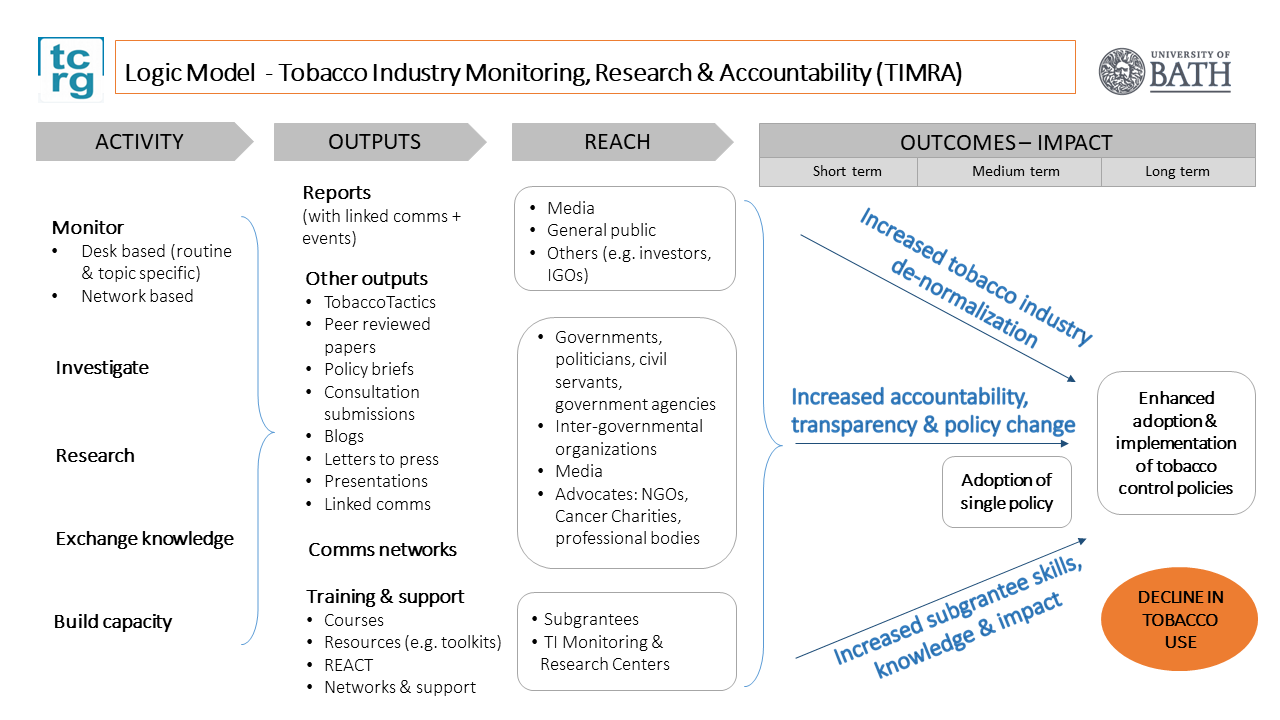Tobacco Control Research Group: TIMRA Model
This page was last edited on at
What Is the Problem?
Tobacco is the leading cause of preventable death worldwide. Each year more than 8 million people die from tobacco-related diseases, and of the 1.3 billion smokers 80% live in low- and middle- income countries.1
In February 2005 the Framework Convention on Tobacco Control (FCTC) came into force to help reduce tobacco use globally, and reaffirm the right of all people to the highest standard of health.
The FCTC was negotiated under the auspices of the World Health Organization (WHO). In 2022 there were 182 Parties to the FCTC, making it the one of the most widely embraced treaties in United Nations history.2
However, there is general consensus in the global tobacco control community that the greatest barrier to progress in FCTC implementation, and reducing tobacco’s deadly toll, is tobacco industry interference.3 To this end, Article 5.3 of the FCTC obliges countries to protect their health policies from the ‘vested interests of the tobacco industry’.
Monitoring and researching the tobacco industry, and holding it to account, are essential for the success of tobacco control policies.45
How We Aim to Contribute to Change
In 2011, the Tobacco Control Research Group (TCRG) at the University of Bath established its first comprehensive tobacco industry monitoring, research and accountability (TIMRA) programme, in line with Article 5.3. The figure below is a simple graphic illustration that gives a macro view of how its TIMRA programme proposes to lead to policy change, and ultimately, contribute to a decline in tobacco use.
The model shows the main components of TCRG’s TIMRA activities, the variety of outputs produced (of which TobaccoTactics is one), the wide range of audiences reached, the way it leads to impacts, and how this will contribute to reducing tobacco use globally.

Figure 1: TIMRA model, Tobacco Control Research Group 2018
As figure 1 shows, TIMRA activities and outputs are developed to achieve policy change in the short and long term.
- In the short term, the programme aims to effect so-called ‘policy windows’. These are windows of opportunity for policy change where identifying, exposing and addressing tobacco industry interference is essential to success.
- Long-term policy change is achieved through social norm change. Persistent efforts to address tobacco industry misconduct which leads to tobacco industry de-normalisation, thereby changing the policy environment in favour of tobacco control policy enactment, implementation and enforcement.
Relevant Links
- Tobacco Control Research Group website
- Investigating Big Tobacco’s influence on public health, University of Bath website
TobaccoTactics Resources
- TobaccoTactics and TCRG: About Us
- Case-studies of TCRG impact
- Tobacco Control Research Group: Peer-Reviewed Research
For a comprehensive list of all TCRG publications, including TCRG research that evaluates the impact of public health policy, go to the Bath TCRG’s list of publications.